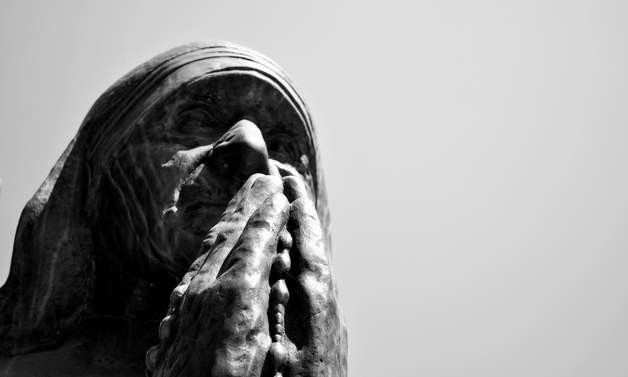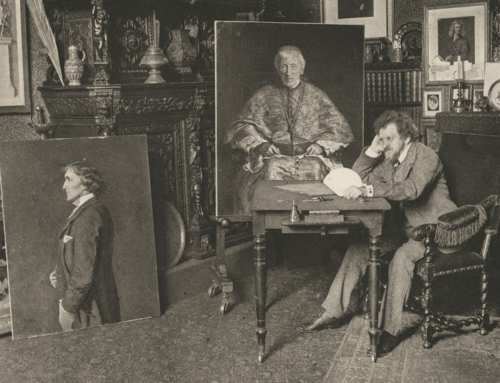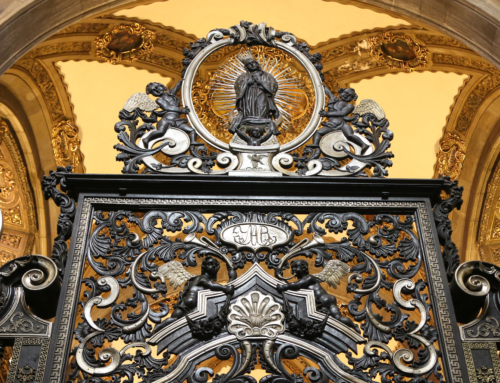“When you do good, do it quietly, as if you were throwing a stone in the sea.”
So goes the saying of Dranafile Bojaxhiu, often recounted by her daughter Agnes, better known to us as the great Mother Teresa. Of all the saints of the twentieth century, she is perhaps least noted for having led a quiet life. She is, after all, the only one of that holy company who received the Nobel Peace Prize. Yet with all the global recognition her extraordinary life and work attracted, “Mother” (as she is called by her community) was the very last person in the world to seek attention, never “sounding a trumpet” before her in the street. Instead, much of her life was spent obeying the Lord’s command to “shut the door and pray to your Father in secret” (Mt 6:2–6). Her street-roving sisters of the Missionaries of Charity still maintain a cloister, the private or secluded living space within a convent.
September is a good time to recall the witness of the Missionaries of Charity, for it is a month filled with momentous events in their history. September 5 is Mother’s feast, the day she died and was born into eternal life. There is also September 10, called “Inspiration Day.” On that date in 1946, she was on a train to Darjeeling, in northern India, where she had already made vows as a Loreto Sister fifteen years previously. On the journey, she received a message from Jesus Himself, giving clear instructions to found a new order of sisters devoted to “the poorest of the poor.”
This is crucial for understanding the success of the new society. From the start, God was the instigator of the project—it was His idea in the first place. It would be striking enough for God to call a young woman working in the world to leave everything and follow Him, but all the more so for God to invite a religious sister to radically reinvent the way she lived her vows. The continued success of the Missionaries over the years and across the earth is not due merely to enthusiasm, a tremendous work ethic, or even having a saint at the helm. No, every success flows from the fact that Mother kept Christ first and foremost. In response to His initiative, she made Him her initiative. Only by that did she become a saint.
This is the logic of cloister, of having a private space of their own in every house—even in their first shelters which housed the dying, unwanted children, and lepers. Here they would rest and rise, eat and pray. For cloister is the cost of achieving the “one thing necessary,” which is loving attention to Christ, their bridegroom and inspiration. As the monastic adage puts it, the sole purpose of entering religious life is to “learn Christ.”
Yet these sisters are not cloistered nuns, and it requires a demanding balance to attempt both active work and observed cloister in a bustling city like Calcutta. The first residence of the Missionaries was a second-story apartment above a local Catholic family, until a local priest purchased their motherhouse from a Muslim man departing for Pakistan. Their first hospice for the dying, Nirmal Hriday (“Place of the Immaculate Heart”), was given to them by the state and adjoined a Hindu crematory and high-traffic temple to the goddess Kali.
Another small story illustrates Mother’s knack for handling challenges of all sorts. From the day of her extraordinary call, it was another four years until the Missionaries of Charity first gained approval. Initially, the priest acting as her spiritual director prevented her request for one year. Jesus had personally asked her to found a society to “quench his infinite thirst for love of souls,” but she was ordered to wait and see if it was but a passing enthusiasm. During the interim, she was transferred by the Loreto Sisters from the busy school where she was a teacher to a remote monastery for six months to be its gardener. Against all expectations, she seemed to enjoy the change. Hidden in a garden and anxious to begin, she resolved to find Christ even there, before setting out to find Him in the slums.
The legacy of Mother Teresa is often distilled into two qualities: her immense contribution to social justice and her heroic virtue in staying the course through decades of hidden interior darkness, revealed by her private letters. What is often forgotten is that she was simply a faithful religious sister long before she was flanked by twelve young followers, arrayed in the blue and white saris, amidst the gutters of India.
Formed in the life of prayer, she upheld that priority in the new community she established. Arguably the most prominent figure in the Church during the past century (rivaled only by Bl. John Paul II), her daily life was given to prayer, whether in the convent, traveling by plane, or recuperating in a hospital bed herself. She was first a lover of Christ before being a lover of the poorest of the poor. Only Christ could place that kind of charity in her which was His own. Her followers continue this life, being at once the Energizer Bunnies of the Christian world, while observing the duties of religious life and its demands of silence, separation, and seclusion. Like their Mother, their strength has its source in loving attention to Christ, so that during their daily Holy Hour before Him, they just let the doorbell ring.
✠
Image: Troy, Mother Teresa in Skopje







